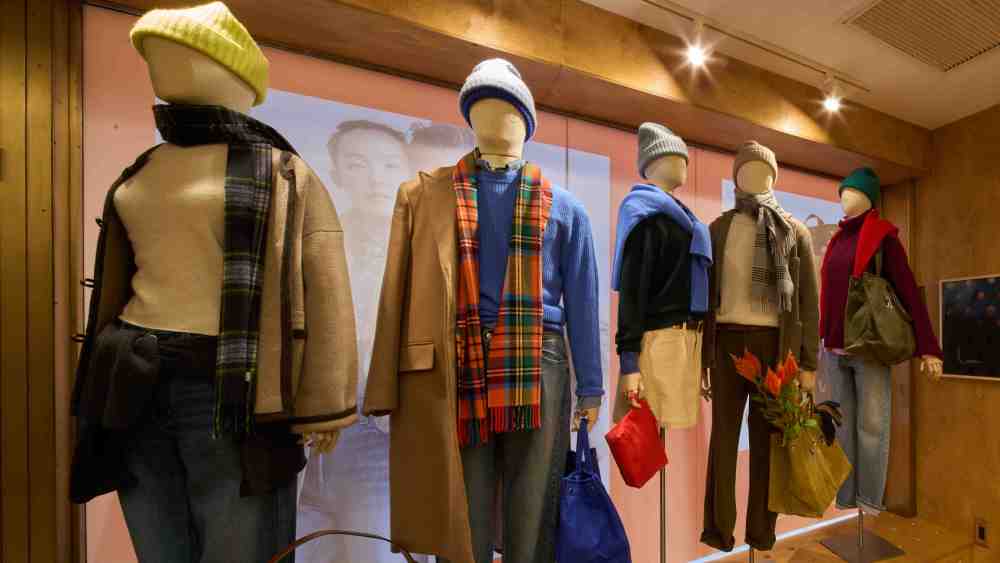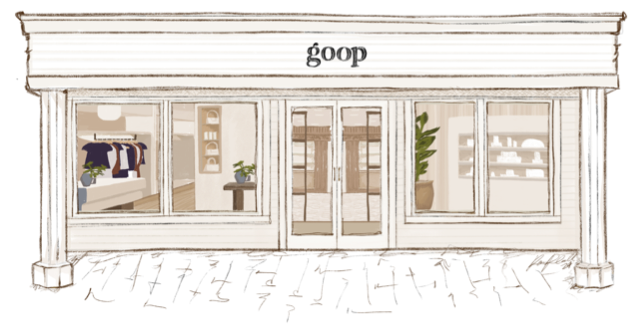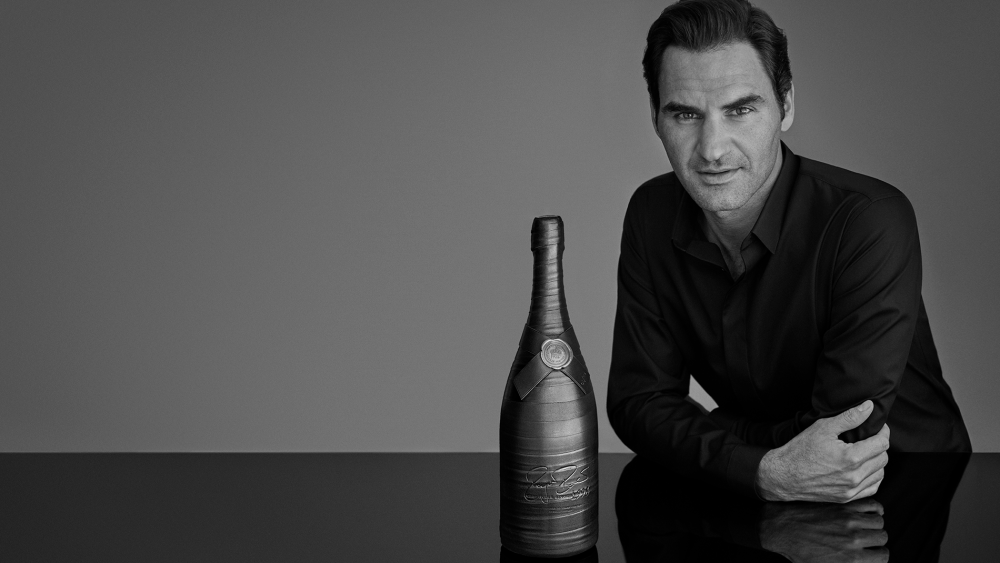At Alex Mill, restraint seems to be the operative word.
The casual collection of men’s and women’s sportswear shuns logos, keeps its prices real and affordable, and steers clear of the fashion industry’s promotional dependence. And there’s been no rush to develop a sizable fleet of brick-and-mortar stores.
“We’re taking it step by step,” explained Millard “Mickey” Drexler, chairman of Alex Mill, founder of Old Navy and Madewell, and former chief executive officer of The Gap Inc. and J.Crew.

On Monday, Alex Mill opened its third store, a 1,200-square-foot shop at 1 Rockefeller Center, right next to Lodi, a popular Italian aperitivo-style restaurant. In terms of pedestrian traffic, Rockefeller Center is among the busiest sections in Manhattan, teeming with office workers from the city and the suburbs, and packed with tourists, particularly during the holiday season. For crowd size, Rockefeller Center is rivaled only by Penn District on Manhattan’s west side which is in the midst of transformation and modernization.
You May Also Like
“Why did we pick Rockefeller Center? It’s been reimagined and remerchandised to be very fashion relevant, and culturally relevant,” Drexler said.
The Alex Mill brand also caught the eye of Rob Speyer, CEO of Tishman Speyer, Rockefeller Center’s landlord, who has led the reinvention of the property and its more than 6 million square feet of rentable space. “He liked what we were doing, they called, and we got together,” Drexler said.
Within the last few years, Alo, Aritzia, Todd Snyder, Freemans Sporting Club, Kule and Lingua Franca opened stores in Rockefeller Center, among other brands. And last fall, the Council of Fashion Designers of America used The Rink at Rockefeller to screen live and recorded runway shows from New York Fashion Week. Speyer thought Alex Mill would be a good fit.

“We are a New York-based brand and there is no place that better shows the energy and vibe of New York than Rockefeller Center,” said Alex Drexler, the founder of Alex Mill, and the son of Mickey. “This spot feels like a perfect place to open a store.”
The Drexlers, along with Alex Mill president Ali Dillon and creative director Somsack Sikhounmuong, gathered at their new store last week to discuss how the brand has evolved, why they think it’s distinctive from other fashion brands, and their philosophy on continuing to open stores. Alex Mill’s two other stores are located at 1182 Madison Avenue on the Upper East Side and 77 Mercer Street in SoHo. While they’re also very good retail locations, as far as footfall, “It’s not even close,” to what Rockefeller Center delivers, Mickey said.
All three stores are similar in size. “We think small is the new big,” he said.
Adhering to that philosophy enables the brand to present stores with a more focused assortment, and an easier shopping experience. “I have opened many stores that were too big,” said Mickey, momentarily reflecting on his past. “I consider this one a jewel box.”
For the future, “We are very flexible on how many stores we open,” he added. “If there are any landlords who have an interest, we are standing by 24/7. Frankly, we are looking for landlord partnerships.”
While Alex Mill is not announcing any additional locations for stores just yet, several cities are desirable. Los Angeles is top of mind for the Drexlers, while the team also feels Brooklyn, Nashville and Charleston, S.C., could be targeted for locations. The Hamptons are also of interest. Last summer, two Alex Mill pop-ups appeared on Long Island’s East End, in Bridgehampton, and subsequently in East Hampton. But as Mickey has observed, real estate in the Hamptons is limited and the business out there is seasonal, peaking June through September.
“We have a lot of our customers in different regions eager for us to open a store,” Alex said. “They’re online customers who would love us to open a store, which over time we plan to do.”

Alex Mill’s headquarters operates out of a modest, 6,000-square-foot site on Lafayette Street in SoHo with a couple of dozen workers. Originally, Alex was on a quest to make the perfect men’s shirt and so Alex Mill was launched in 2013 with wholesaling and a 400-square-foot shop on Elizabeth Street in NoLIta. Two years later, an e-commerce site was launched.
In 2019, Alex Mill was relaunched in several significant ways. A new vision for the brand was developed with the ultimate aim of elevating the business and its status in the fashion industry. Moving into Rockefeller Center is a step in that direction, making the brand more accessible to customers. “We are already located uptown and downtown. This time, we wanted to be in Midtown,” Dillon said. The Elizabeth Street store was replaced with the Mercer Street site, and the Madison Avenue store opened.
As part of the relaunch, new leadership was recruited, including Sikhounmuong who is regarded as an Alex Mill cofounder since when he entered the business he started designing the women’s collection for the brand. He previously worked with Mickey at Madewell and J.Crew. Mickey also took on a deeper role at the company, as chairman, to help guide it and broaden the collection from primarily men’s shirts to womenswear and wardrobing. At the same time, the focus shifted to creating a timeless, classic aesthetic with materials and styles designed to last for seasons. There is also a lot of color injected in. With all those elements, Alex Mill has found a clear voice.

“We have a unique niche in the market because we feel we are offering customers what’s not out there — a great, tightly edited assortment where there’s a lot of value, and where you won’t necessarily buy something and then one season later, move on to another item,” Alex said. “These are items that can live in your closet for a long while, and that’s something we stand behind. Hopefully, they’ll be vintage one day.”
“By design, we keep the collection tight and focused,” Sikhounmuong said. “There’s not too much. We think less is more.”
It’s a balancing act to advance the offering while keeping the image sharp. The team wants Alex Mill to be more of a household name brand without getting too big to manage properly, or so expansive as to confuse the customer with many fashion messages.
“Consumers don’t want more clothes. They want the right clothes,” Dillon said. “Versatility is key, so you can wardrobe, with so many different pieces as well.”
“What the team designs are clothes that don’t go out of style,” added Mickey. “We don’t do obsolete.”

He also said that the company is seeing a very high percentage of women buying certain items in the men’s assortments, for themselves. “Frankly, that’s the trend,” Mickey said, singling out the brand’s bestselling Mitchell cardigan, which comes in washed cashmere and is priced $350, and the super soft cashmere beanie, priced at $98.
Among the brand’s other bestselling items from season to season: hand-stitched, hand-painted monogrammed weekend totes; cashmere argyle socks; Peruvian hand-knit sweaters, and the garment-dyed “Jo” shirt.
As far as logos, long a hallmark of Gap clothes, he’s over it. “We don’t do logos,” Mickey said. “Customers wearing our clothes, that’s our logo. You don’t have to see it coming at you. And that’s what the world is about.”
The pricing is critical, and kept reasonable for the quality. “If you look at the market, there seems to be designer price fatique,” said Mickey, suggesting consumers are rejecting those designer prices.
According to Dillon, 85 percent of the assortment that’s sold is priced between approximately $145 and $300 with, for example, a cotton cardigan sweater at the low end of that range, and a cashmere turtleneck or cashmere polo at the top. At its high end, Alex Mill offers women’s coats in the $1,000 price vicinity.
“We’re not a promotional brand,” Alex said. “We haven’t had to be.”
Ten months ago, Alex Mill launched denim, which according to Mickey was an easy decision. “It is the most ubiquitous style and fabric in the world,” he said at the time. “When we relaunched Alex Mill clearly we had a vision for what Alex Mill could be going forward. Of course, denim was on our list.”
“In the accessory space, we’ve added canvas pouches, shoes, cashmere scarves, beanies and socks in the last three months,” Dillon said.
“We have created some unique products for this store — Rock Center hats, and One Rock totes,” Alex said.
The Rockefeller Center store is further distinguished by its interior design. “Although we love our other stores, the finishes here are more elevated,” Dillon said, citing the darkened pegboards used for merchandise display as well as the artwork on exhibit. “We wanted this store to feel like it was part of this neighborhood, right down to our Art Deco lighting,” she said.




